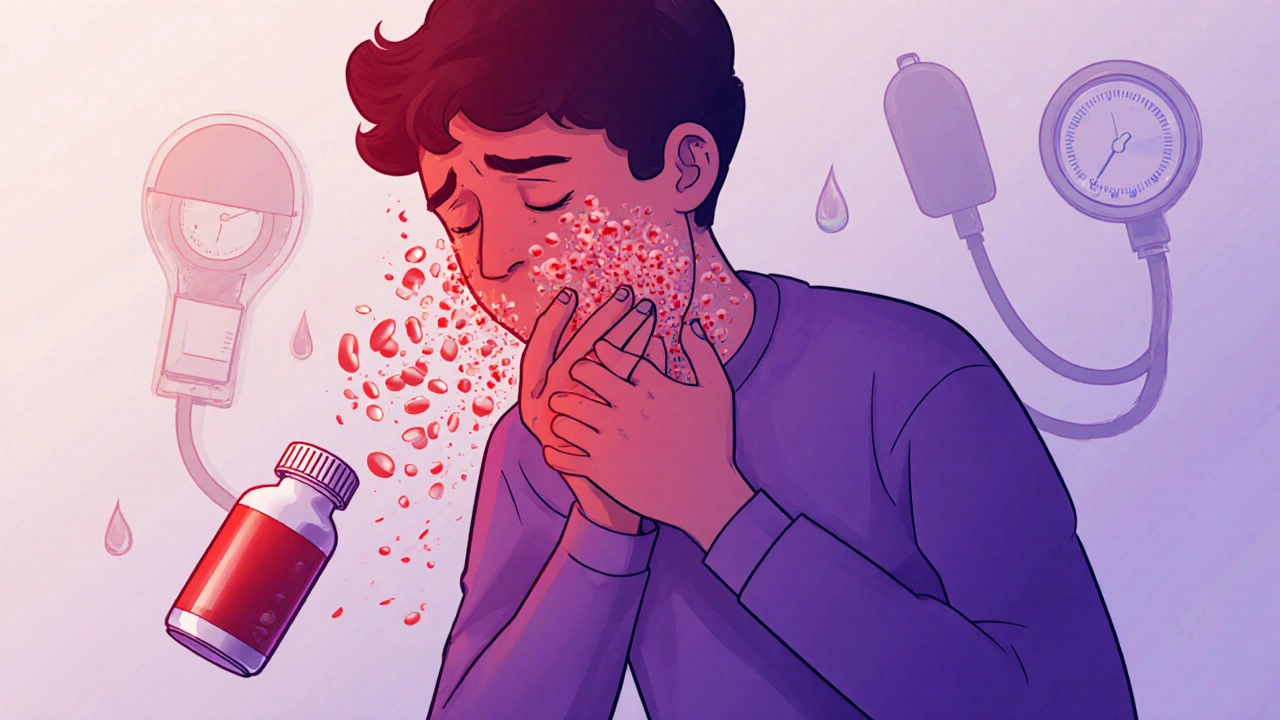Epinephrine: What It Is, How It Works, and When It Saves Lives
When your body goes into shock from a severe allergic reaction, epinephrine, a hormone and medication that rapidly reverses life-threatening symptoms like swelling, low blood pressure, and breathing trouble. Also known as adrenaline, it’s the only drug that can stop anaphylaxis before it kills. This isn’t just another medicine—it’s your body’s natural emergency signal, amplified and delivered fast when you need it most.
Epinephrine works by tightening blood vessels, opening airways, and boosting heart function—all in seconds. It’s the go-to treatment for anaphylaxis triggered by foods like peanuts, insect stings, or medications. People with known severe allergies carry epinephrine auto-injector, a handheld device designed for quick, no-fuss use during emergencies because waiting even a few minutes can be deadly. Studies show that delays in giving epinephrine during an allergic reaction increase the risk of hospitalization and death. That’s why knowing how and when to use it isn’t optional—it’s essential.
It’s not just for allergies. Epinephrine is also used in cardiac arrest, severe asthma attacks, and even some types of shock. But its most common and critical role is in stopping anaphylaxis. Many people confuse it with antihistamines like Benadryl, but those won’t cut it in a true emergency. Antihistamines help with itching or hives, but they don’t reverse airway closure or low blood pressure. Only epinephrine does that. And if you’re someone who’s been told you might need it, or if you’ve seen a loved one react badly to a bee sting or shellfish, you need to understand this: epinephrine isn’t something you hope you’ll remember to use—it’s something you must have ready.
Behind every story of survival after an allergic reaction is someone who acted fast with an epinephrine auto-injector. But too many people still don’t know how to use one, or they keep it tucked away where it’s hard to reach. Others think they can wait and see if symptoms get worse. They don’t realize that the window to save a life is often under five minutes. That’s why the posts below cover everything from how to spot early signs of anaphylaxis, to why some people need two doses, to what happens when epinephrine is given too late. You’ll also find real advice on storing your auto-injector, traveling with it, and explaining its use to teachers, coworkers, or family members. This isn’t theory—it’s practical, life-saving knowledge, gathered from real medical guidance and patient experiences.
Anaphylaxis from Medications: How to Recognize and Respond to a Life-Threatening Allergic Reaction
Anaphylaxis from medications is fast, deadly, and often misdiagnosed. Learn the warning signs, why epinephrine is the only lifesaver, and how to act before it’s too late.

